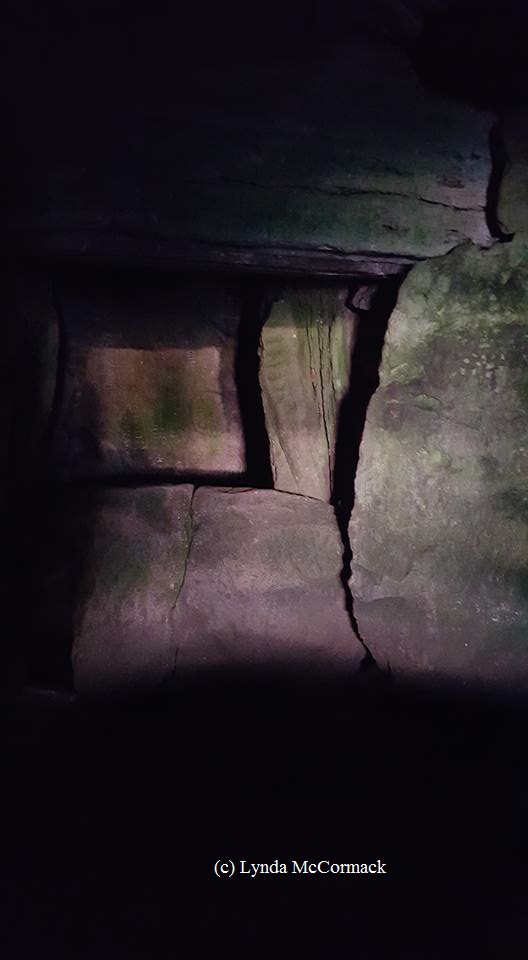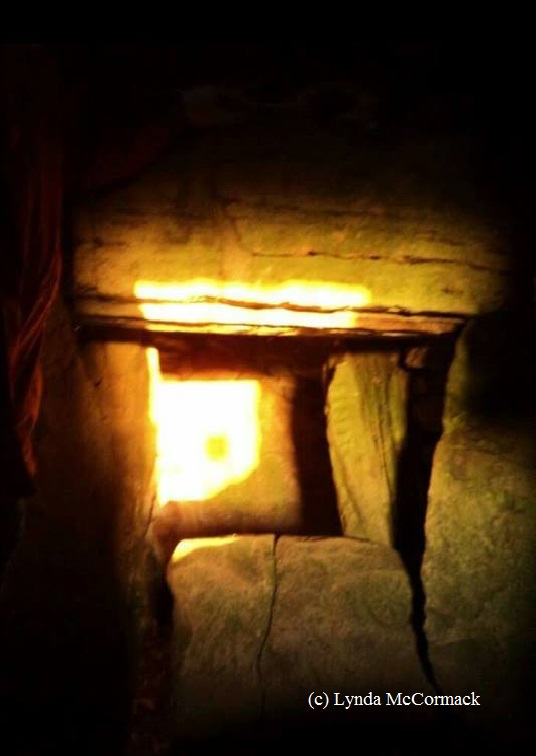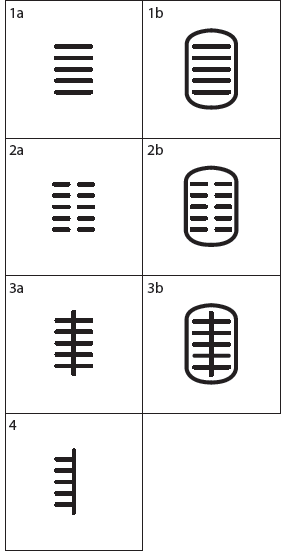Sliabh na Calliagh Passage Tomb complex is one of Ireland’s finest prehistoric archaeological sites. I am delighted to present a guest blog by the wonderful Lynda McCormack that explains the archaeological significance of the complex and its role in the autumnal equinox. Lynda is currently carrying out Doctoral Research at the Department of Archaeology at NUI Galway and Sliabh na Calliagh is one of her study areas.
The Autumnal Equinox and the Sliabh na Calliagh Passage Tomb Complex By Lynda McCormack
Introduction
The Sliabh na Callaigh Passage Tomb Complex often referred as the Lough Crew Complex is located in the north west of County Meath on a raised ridge of lower carboniferous limestone which erupts in four individual summits known as Carnbane West, Newtown hill, Carnbane East and Patrickstown Hill. The central and highest hill within this ridge is Carnbane East. At a height of 274m this is the highest point in County Meath and from this position in the landscape it is allegedly possible to view up to 18 counties on a clear day.
There are 31 archaeological monument found on the heights of summits and low valleys within this area. Antiquarian accounts of the area suggest there may have been many more monuments here with some dismantled in the past for the construction of walls in the 1800’s. Recent geophysical investigations which involve non invasive scanning of the ground to detect the signature of sub surface remains have clarified the pattern of monument distribution with the result that it is now possible to speculate that the arrangement of space within the Complex may have been quite different in the Neolithic (McCormack 2010, 2012, 2013, 2014).
Folklore and Origin legends
The name Sliabh na Calliagh translates as the hills of the Witch and references a local explanatory narrative which attributed these enigmatic stone heaps to a mythological Cailleacht/Witch who allegedly dropped these stones from her apron as she jumped from hill to hill in her quest to rule all of Ireland. She apparently fell to her death on the lower slopes of Patrickstown hill but not before dropping these stone cairns in her wake. The detail inherent in these stories suggests that the locals who perpetuated these narratives were familiar with the distribution of sites across the ridge. Not only is the site named after her, one of the distinctively shaped kerbstones on the northern face of one of the largest monuments Cairn T is named the Witches’ chair and it is thought that if she had succeeded in her quest then this particular stone could have functioned as her throne.

Cartoon of the caillech/withch dropping the stones from her apron after (Eibhlin Nu Sheinchin 1937).
Determined now her tomb to build, Her ample skirt with stones she filled,
And dropped a heap on Carnmore; Then stepped one thousand yards, to loar,
And dropped another goodly heap; And then with one prodigious leap
Gained Carnbeg: and on its height, Displayed the wonders of her might. (Jonathan Swift 1700).Passage Tomb Complexes and Passage Tombs
The Sliabh an Calliagh Passage Tomb Complex is one of our four major Irish Passage Tomb Complexes. There are over 236 of these monuments in Ireland, many of which appear within these four main concentrations. While many other Megalithic structures such as the Court Tomb, Portal Tomb and Wedge tomb most commonly appear in isolation. The Passage Tomb monument type is distinctive for its appearance in groups. These groups are commonly referred to as Cemeteries but are most accurately referred to as Complexes because a burial role can only have been one small part of their ritual usage. The most famous Irish Passage Tomb Complex is undoubtedly the Boyne Valley Complex where Newgrange and Knowth have been extensively excavated and reconstructed to facilitate tourist access via the Bru na Boinne visitor center in Donore Co. Meath. The two complexes in Co. Sligo are known as the Carrowkeel/Keashcorran Complex and Cuill Irra and both of these have been subjected to multiple research initiatives including excavation over the years. The Carrowmore distribution which is central to the Cuill Irra Complex is also accessible via an OPW visitor centre.
Passage Tomb monuments are named for the presence of a long passage which leads to a chamber which is concealed within a cairn of stones and retained by a kerb line of boulders. There is much variation in terms of size and while some monuments are small and compact and may never have facilitated human entry others are large and complex and appear to have been constructed to be as impressive as possible to a spectator.

Photograph by Paul Naessens Cairn T centrally placed on Carnbane East with Cairn U to the right and Cairn S in the background.
They date to the Neolithic period c. 3000BC and are complex ritual structures within which cremated human remains were carefully deposited. Although human bone is usually within these structures, they were not just built to contain to remains of the dead. These structures were built with ritual and used with ritual an in many instances excavation has revealed a series of foundation events which predate the structures suggesting that the very positions which they occupy within the landscape were of importance long before they came to be monumented in reflection of this in the Neolithic.
The Sliabh na Calliagh Passage Tomb monuments were brought to prominence by local school inspector Eugene Alfred Conwell in 1863 after a fortuitous visit to the summit of Carnbane East. It is most likely that the monuments were already well known to the locals and possibly also further afield but their significance was not understood or contextualised within the Irish Passage Tomb Tradition until Conwell began his investigations. He thoroughly searched the ridge and the surrounding hinterland and carefully documented each monument and implemented an identification scheme by which the individual monuments are still known today. Following his detailed field walking he undertook a series of investigations focused specifically on the recovery of human remains and the careful recording of each decorated surface. His records are of great value particularly because much of this art has been badly damaged and is no longer visible. Conwell also presented his findings to the Royal Irish Academy on numerous occasions and was responsible for the publication entitled The Discovery of the Tomb of Ollamh Fodhla. His research was conducted in the style of the time where different questions were asked of the data and so very little attention was paid to stratigraphy. Despite this however, Conwell was an industrious student and not only are his records detailed they are thoroughly engaging as he describes how he conducted his investigations under the watchful gaze of a number of ‘fine ladies’. Although the Sliabh na Callaigh Passage Tomb Complex is well known for its Neolithic Passage Tombs, it is a multi-period landscape which includes evidence for Mesolithic, Bronze Age and Iron Age activity extensively focused on the landscape to the north of the ridge.
The Equinox at Cairn T Sliabh na Calliagh
Many of the passage tombs on the height of the ridge are orientated towards the east and Cairn T in particular is carefully positioned with the effect that it captures the rays of the rising sun on the mornings of the Equinox in March and September. This alignment takes place over the course of five mornings and lasts for up to 30 minutes provided that the sun can penetrate the clouds.
Having visited the Equinox for over 15 years myself, I can say that it is easier to see it in March around 6am in comparison to September around 7am when the weather can be a little more unpredictable. Each year on the mornings of the Equinox, hundreds of tourists climb Carnbane East in the dark to watch the sun rise and to access Cairn T where they can watch the light travel over the floor space of the passage until it eventually reaches the highly decorated backstone which is directly aligned with the entrance portal.
Those who enter the chamber of Cairn T on the mornings of the Equinox can watch the sunlight trace its decorated path across the surface of the stone, starting in the top left hand corner and moving right in front of their eyes until it comes to rest on the chamber orthostat to the right of the recess.
Interestingly, the quality of the light changes as it moves across this stone, as the sun rises. The colour of this light also changes from a deep red to a vibrant golden yellow.
The decorated backstone has been extensively studied and Shee Twohig (1981) notes that the ‘sunburst motif’ which is illuminated by the sunlight on the mornings of the Equinox is not found elsewhere within the Complex or within the Irish passage Tomb Tradition.
Within Cairn T in particular there are 19 decorated orthostats, 2 decorated sill stones, 8 decorated roof stones and one decorated kerbstone known as the Witches’ chair (Shee Twohig 1981, p. 214). Another interesting motif which is found on the surface of this stone is the offset motif which is also known as the scaliform motif (Robin 2008), Robin’s recent research into the structured placement of megalithic art within Passage Tomb monuments has shown that this particular motif is commonly found in association with entrances and sill stones and places of transition within the monument.
Its appearance here on the backstone is potentially indication of a metaphorical transition seeing as it is not possible to physically move thorough this space. Perhaps the presence of this motif on this surface is also connected to the transition of the sunlight across the surface of the stone. Megalithic art is commonly referred to as abstract art. There are multiple interpretations of what the individual motifs might represent and each interpretation is a valid as the next but it is impossible to be sure of the true meanings affixed to the individual motifs. One thing is certain though, this art was undoubtedly integral to the ritual experience of the site and undoubtedly had a deep meaning for those who constructed and used these spaces in the Neolithic.
Visiting Sliabh na Calliagh
The central hill of the Sliabh na Calliagh Passage Tomb Complex known as Carnbane East is state owned and access can be gained free of charge to this site throughout the year. The key to Cairn T can be obtained from a local coffee shop and so access is facilitated to this monument even after the OPW have withdrawn their tour guiding presence which extends throughout the summer months .This Monday on the 21ST of September at 7AM hundreds of us made our twice yearly pilgrimage to the heights of Carnbane East in the dark hoping to experience the sun light trace its decorated path across the backstone of Cairn T. In doing so we were potentially re-tracing the footprints of our Ancestors who constructed these monuments 5000 years ago who may have climbed this hill with comparable anticipation. Those who made the trip this year were rewarded by the sight of a sunrise from the highest vantage point in County Meath, We were also rewarded by the sight of the sunbeams carefully captured within the monument for this short period of time.
We will gather again in March 2016 for the Vernal Equinox which marks the return of the light and the lengthening of the days but until then we are left with an evocative image of how these monuments may have been used to measure the passing of time in the Neolithic.
You can keep up todate with Lynda’s research on twitter at @LyndaMcCormack1 and on academia.edu
References
Conwell, E. 1873. Discovery of the tomb of Ollamh Fodhla. Dublin, McGlashan &Gill.
McCormack, L. 2010. A Comparative and Multiperiod Landscape Analysis of the Sliabh na Callaigh Hills. Unpublished MA Thesis. NUI Galway.
McCormack, L. 2012. A Geophysical Investigation of the Sliabh na Callaigh Passage Tomb Complex Phase 1. Unpublished report NUI Galway
McCormack, L. 2013. A Geophysical Investigation of the Sliabh na Callaigh Passage Tomb Complex Phase 2. Unpublished report NUI Galway.
McCormack, L. 2014. A Geophysical Investigation of the Sliabh na Callaigh Passage Tomb Complex Phase 3, Unpublished report NUI Galway.
McMann, J. 1995. Loughcrew the Cairns a Guide, Meath, After Hours Books.
Robin, G. 2008. Neolithic Passage Tomb Art around the Irish sea Iconography and Spatial Organisation. Unpublished Ph.D thesis, Nantes.
Shee Twohig, E. 1981. The Megalithic Art of Western Europe. Oxford, Clarendon Press.














Fascinating – I’d love to make the effort to see this.
The ‘equinoxious’ passage of Cairn T appears in this article too:
https://thegrammarofmatter.wordpress.com/2015/08/14/a-petroglyphic-monad-the-constellation-of-megalithic-art-finnegans-wake-and-benjamins-arcades-project/
https://daithiocaomanaigh.wordpress.com/2015/08/31/sli-na-caillaigh/
Love this place.
Is it just my imagination or is the plan view of the tomb similar to a drawing of a womb with the fallopian tubes at either side? Maybe something to do with symbolic rebirth?
I thought that as well.
Reblogged this on Adventures and Musings of an Arch Druidess.
Lovely article Lynda, great explainations , drawings and photos. Fascinated ny the Neolithic myself. I shall have to bring my family up next March to see this. Thanks, FrankO
Thanks Frank Lynda did great job and enjoy your visit in March.
It would be a great help in reading this if there was an indication of how to pronounce the Irish names. Thanks.
Thanks for feed back will see about adding phonetic representation of the Irish words in next while you might find this website of interest for pronunciation of Irish townlands http://www.logainm.ie/ga/
Very interesting. Wish I could see it!
Thank you, Lynda did a great job with this post. Hopefully you will get to see it some day